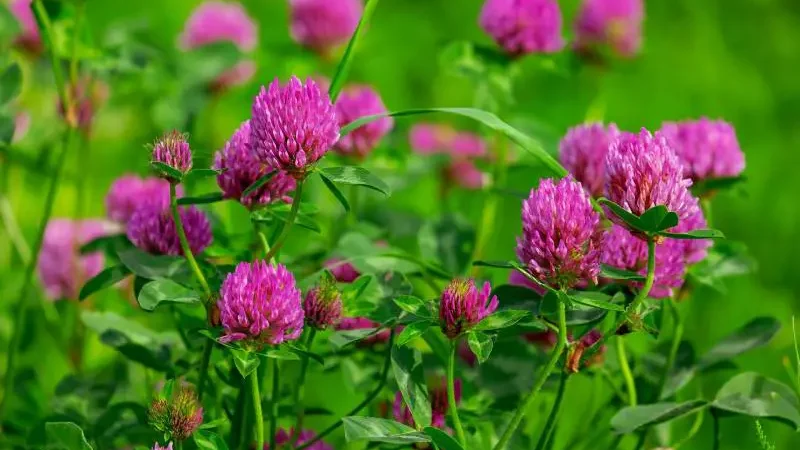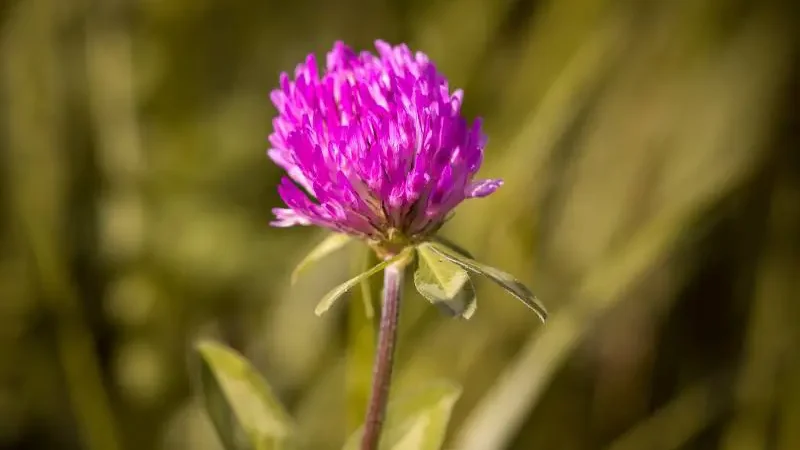All About How Does Clover Spread

Clover is a cover plant with over 300 species around the world. It is the general name for species of annual and perennial plants. Most of these plants are leaf-shaped and flowers shaped like ball clusters with colors like white, red, pink, purple, or yellow.
People usually think clovers are weeds. However, they are used as food for cows and as a crop used in restoring the soil in farm fields. The good thing about Clover is that it is one plant that does not require high tending to like grass, and it also aids local pollinators.
You also do not need to fertilize it, and it is drought resistant, meaning it can grow under any weather.
In this article, we will let you how the different types of clovers spread.
The Different Ways Clover Spread
Clovers are propagated by sending out root offshoots, or stolons separated from the mother plant to create a new clover. After being rooted, clover can spread quickly and fill your garden or lawn care.
With the help of stems rooted in the ground and producing new plants, it can quickly spread throughout lawns. Clover is a winter-germinating weed that thrives and spreads in the season when soil temperatures are mild and warm and there is plenty of sunlight reaching the topsoil.
Except for Southeast Asia and Australia, most temperate and subtropical regions of the world have clovers, and cultivated species have naturalized in temperate regions all over the world.
Pollination
Honey bees have a very important to play in the pollination of clover. Farmers usually build beehives in clover fields to help the plants as well as produce clover honey. Since only long-tongued bees (primarily honey bees and bumble bees) can access the nectar, alsike and red clovers need them for their pollination.
The pollen may be accessible to smaller insects. Insect pollinators increase alsike clover yield by tenfold or more.
Seeds
Clovers usually produce their seeds in large numbers. Their shells are hard and can be dormant for long periods till the conditions favor germination. You can start your sprouts by soaking your seeds in a bowl of cool water for 4-6 hours, or overnight, making sure that the seeds are completely submerged and not floating on top of the water.
The seed coat will soften as a result, encouraging germination. After soaking, completely drain the water.
Scarification
When eaten by cows or sheep, the seeds can be broken down in the animal’s intestinal system. This process is known as scarification. This is how animals help to spread the seeds.
Scarification is designed to soften the seeds to make them more permeable to water hence easy germination. It helps to speed up the processes that lead to germination.
Manual Spreading
Farmers also help in propagating clover seeds on the soil with the help of a cultipacker which covers the seeds with light soil. They perform seeding in late January or early March, usually, they mixed clover seeds with other grass seeds.
Because grass and other plants will not be competing with them as they try to establish themselves, early spring is the best time to plant them. There are a lot of hardware stores, garden centers, and online retailers that sell handheld spreaders.
Sowing by hand is also an option if you don’t have spreaders.
Types Of Clover And The Unique Way They Spread
White Clover
White clover is a native and procumbent perennial in the UK. It typically grows in meadows and pastures, lawns, and grass verges. The White clover is a very important pasture as it helps to fix nitrogen using its root noodles and improves the fertility of the soil.
It is also an essential food for grazing animals as well as wildfowl. White clover produces flowers between June and September.
These flowers are usually pollinated by insects. The white clover seeds become viable after 12 days of flowering then take a month before it fully ripens.
Each pod contains 3-6 seeds, and they germinate after seven weeks.

Seed dispersal is essential for the spread of white clover. Many seeds have been found in cow manure samples. White clover can survive in compost farm manure but won’t survive in a dung heap.
Earthworms help to increase the spread and germination of white clover seeds.
Red Clover
Red clover, also known as Trifolium pratens is a flowering plant that belongs to the family of peas and beans. The red clover is native to Europe, Africa, and Asia. However, it has been naturalized in other parts of the world.
As they started to be well-known in various parts of the world, the need to know how red clover spreads has become increasingly important. A critical pollinator of the red clover is Bombus ruderatus, also known as the large garden bumblebee. This bumblebee is responsible for spreading red clover in South America and other countries such as New Zealand.
Micro Clover
Micro Clover is a very dwarf version of the white clover, also known as (Trifolium repens). The Micro clover is ideal to create a clover lawn that is shorter than the standard. The micro clover does not grow up to 6 inches.
The leaves are smaller than the white clover, and if the lawn is mowed, the leaves become smaller. If cut regularly, the micro clover will not bloom at all.
Micro Clovers have flowers that can attract bees, which are their pollinators. If you have bee allergies or have children, growing micro clovers could be an issue.
Yellow Clovers
Yellow Clovers, also known as Melilotus officinalis, is a biennial plant popularly known for its yellow bloom in South Dakota. In the first year of its life cycle, there is almost no growth from the stem upwards because it put its resources into building a very efficient root system.
The sweet yellow clover produces a lot of seeds that can remain viable for 30-40 years. This gives it a competitive edge over others. Sweet yellow clover is very attractive to pollinators like the bees and other birds that help spread it.
Crimson Clover (Trifolium Incarnatum)
Crimson clover grows in regions with mild winters. They usually serve as a forage and cover crop in these regions. Crimson clover thrives better in neutral soils and they produce dark red flowers.
Crimson seedlings grow rapidly on soils of low quality, e.g., sandy and clayey soil.
Berseem Clover
Berseem clover, also known as Trifolium alexandrinum, is an annual legume, usually, its purpose is for a forage crop. This clover cannot thrive in temperatures less than 30 degrees Fahrenheit.
They typically grow as winter forage in warm winter climates and insects and animals spread them.
Subterranean Clover
Also known as Trifolium repens subterraneum, the subterranean clover is a low-growing and self-seeding plant. They serve as a forage legume or cover crop on hillsides that don’t have irrigation. Native to the Mediterranean and the Near East, subterranean clover (sub clover) thrives in environments with dry summers and relatively warm, moist winters.
They can survive in any condition.
Conclusion
Clovers are opportunistic plants spreading in pastures and hay fields, especially when the growing conditions are right. Though clovers are a bit problematic, it is valuable to pollinators and wildlife, and it is a perfect forage crop.